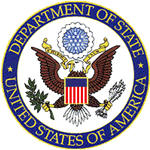DSP-5 Export License Application Requirements
The purpose of the United States Department of State and the Directorate of Defense Trade Controls (DDTC formerly PMDTC) is to regulate and protect the interests and security of the United States. This means that in order to ship items and technology overseas that may potentially jeopardize international security US companies must undergo a somewhat complicated regulatory process.
What does this really mean?
You are not allowed to ship a crate of rifles, a nuclear warhead, or technical schematics for the F-18 overseas without asking the government for permission.
Can I skip the “asking permission” part and just send a crate of night-vision goggles to Iran?
No. You can go to jail, subject yourself to massive fines, and be denied export privileges indefinitely if you don’t go through the system.
But we’ve never done this stuff before and we’ve been shipping our missile guidance systems overseas for years! What gives?
This situation is not unusual. Export controls have been in place for decades but have only recently been spotlighted for enforcement.
Many companies (even some of the big boys) have either intentionally ignored or have been negligently unaware of their responsibilities and have routinely violated US export policy. With export enforcement at the forefront of national security, the US government is cracking down and it is important to make export compliance a part of your business operation.
But I’m not shipping weapons of mass destruction or anything crazy like that! All I want to do is send a bunch of radio wiring harnesses to my customer in Europe. What do I have to do?
If your wiring harnesses are listed on the US Munitions List, you need to fill out a DSP-5 license application and send it to the Department of State for approval.
The DSP-5 license application covers the one time sale of controlled exports that will not be returning to the US. Something fairly benign like a wiring harness would only be listed if it was built exclusively for military use.
I forgot to mention that the wiring harnesses I’m shipping are for an encrypted communication system used by un-manned drone fighter aircraft. Is this important?
Um, yeah.
Note: to make things even more confusing, there is another agency, the US Department of Commerce, that regulates more common “dual-use” goods that have both military and civilian applications (like an avionics wiring harness).
This article is written as a reference to US Deparment of State controlled exports and the US Munitions List – not the US Department of Commerce.
How long does the regulatory process take?
A while. In my experience it can take anywhere from two weeks to two months. Longer if you’ve never done it before.
How do I get started?
Prior to filling out a DSP-5 license application, you need to:
- Register with the Department of State, DDTC.
- Identify the “empowered official” in your organization who will take responsibility for the export,
- Make sure you have the appropriate documentation (see ITAR Section 123.1),
- Make sure you qualify under all of the eligibility conditions listed in the basic certification statement (ITAR Section 126.13)
- Satisfy all the eligibility requirements of ITAR Sections 120.1(c) and (d) as well as 127.1(c) (where applicable),
- Identify your products on the U.S. Munitions List (USML; ITAR Part 121.
Is this a quick process?
No. If you haven’t started the application process make sure to build plenty of time into your delivery schedule so you can get all of the steps completed in time.
Once the above steps are complete, you can begin applying for a license. Complete the application form found in:
Posted on October 3rd, 2007 by keeton
Filed under: ITAR | 16 Comments »



